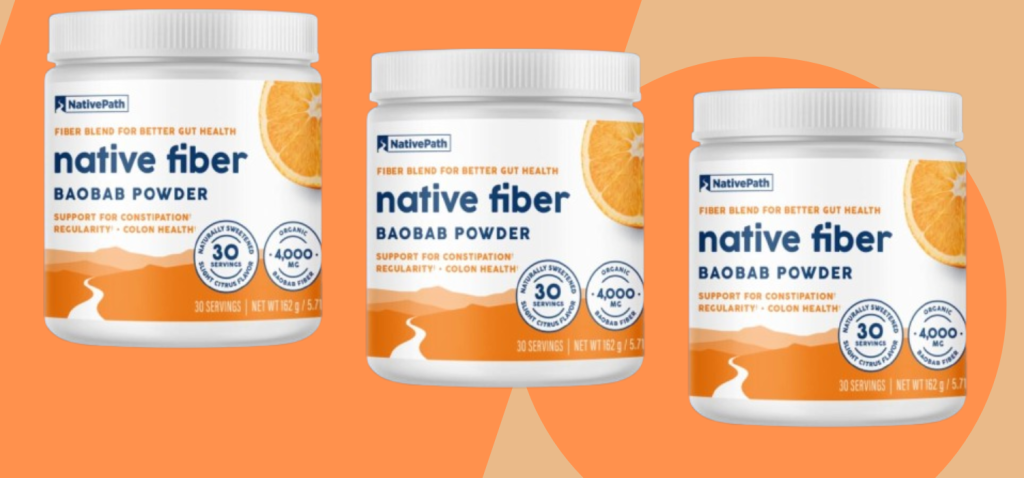Introduction
Native Fibers Materials derived from plant, animal, or mineral origins that have been positively collected, prepared, and used by indigenous people of the world are known as native fibre. These fibres are often sourced from local plant, animal, or even insect species for use in preserving cultural practices, economic benefits, and environmental conservation. The native fiber has been used universally for preparing various items, like baskets, ropes, fabrics, and so on. This article comprehensively examines native fibres from the viewpoint of their relevance in the past and in the present, their importance for sustainable use, and their interaction with cultural traditions.
1. The Diversity of Native Fibers
The term ‘native fibre’ is used to refer to a category of fibre that originates from all parts of the world. These materials fall into three general categories: Pulp, which comes from plants, animals, or insects. As it is evident from the various categories of relativism, each one of them fits a specific application.
1.1. Fibres derived from plants Native Fibers
The tradition for using plant fibres has been actively carried out by Indigenous people for thousands of years. These fibers originate from the stems, leaves, seeds, and roots of plants; among them are cotton and flax. Thus, while cotton, hemp, flax, and jute are perhaps the most widely known plant fibers, indigenous tribes throughout the world have used many other unknown plants .Native Fibers

North American Indigenous peoples gathered the fibers from plants, such as milkweed and yucca, as well as the inner bark of trees. For instance, Native American cultures used yucca fibre—it is durable, and this was used to weave mats, ropes, and sandals. In the same way, aboriginal civilizations in the northeastern USA and Canada used the inner bark of trees, such as birch, to weave baskets and canoes. To ensure that their connection with the land and its resources is maintained, these fibres were often processed using traditional techniques that had been passed down generation after generation.
The Quechua community of the South American Andes has used native fibers, such as llama and alpaca, in making their textiles since before the Spanish conquest. These fibers are suitable for the harsh conditions of the mountains since they are warm, soft, and long-lasting. The wool obtained from alpacas has persisted as a very central component of the Andean region’s local fashion, and designs on alpaca fabrics act as a form of artistic communication and as important markers of people’s cultural heritage. Native Fibers

1.2. Fibres derived from animals Native Fibers
Animal fibres have also been used by many indigenous tribes of the world apart from the plant fibres. Such fibres originate in many cases from hair, fur, or any other soft structures found in some animals.
Wool, which naturally grows off the alpaca, has been woven by the Indigenous people of the Andes mountain range region. Along the same vein, nomads of Central Asia have woven similarly durable and insulating materials from camel hair.
However, the most widely recognized animal-based fiber has to be silk. Silk has been cultivated by Chinese native people for more than 5 thousand years. Apart from using the fabric to produce magnificent clothes, silk had cultural significance in the region. Sericulture, which is the process of using silkworms to produce silk, has always been a stratospheric industry in old China, though it was a big economic component in the exchange of goods and services, especially along the Silk Road.
Wool and down are other animal-based fibers, and indigenous people in Arctic and subarctic regions use them frequently. Such fibers were required to produce fabrics that would provide clothing suitable for areas with low temperatures, such as Inuit sealskin parkas and other pelts.
1.3. Fibres derived from insects
Although silk is the most famous insect-derived fibre, other insect fibres are used throughout the globe. For example, Southeast Asian indigenous people have used the fibers derived from silkworm cocoons to produce fabrics. This process has been in practice for thousands of years for the production of fabrics that are known for their hardness, shiny nature, as well as their softness.
Besides silk, some Indigenous people have ever sought various insect fibres, such as bee or ant, for specific functions, for example, to compose the baskets or the ceremonial tools. Native Fibers
2. Traditional Uses of Native Fiber
Indigenous people have relied on native fibres as a means to exist as a people since time immemorial. These fibres were started to be used in day-to-day essentials like clothes, twines, baskets, and even housing.
2.1. Textiles and garments
Clothing production was one of the most prevalent areas of utilizing indigenous fibers. In order to make clothes that could provide warmth, needed protection from the elements, and even social status in societies, textiles had to be spun, woven, and fashioned.
For example, the Inuit people of the Arctic regions developed outer clothing from animal furs and skins, often seal and caribou. Besides being vital for life on the snow and ice due to the waterproofness of sealskin, the fur-lined parkas, boots, and mittens are warm for the wearer in the extreme cold of the Arctic North.
As early inhabitants of the Americas, the Hopi and Navajo Indians used the fibers of plants, such as the yucca, as well as the wool of sheep
in the knitting of aesthetic garments and covers, such as blankets. These fabrics were mostly associated with elaborate ornamentations of symbols that represented tribe and culture.
High-quality alpaca wool was used to develop coloured clothes, and the patterns were sacred among the Andean people. Not only were textiles utilitarian items, often coarsely produced, but they were also valuable and beautiful objects, and weaving them was viewed as an art of telling stories.

2.2. Containers and Baskets Native Fibers
Fibre basket making was another prominent practice of the Indigenous people, which was considered important. The indigenous people of the American Southwest are the Hopi and the Zuni, who wove baskets to hold foods and other essentials out of necessity using plant fibres such as yucca, willow, and sumac to do this. These baskets
were used for storage as well as probably ritual, and like many baskets from the Great Lakes region, they were often decorated with geometric patterns.
Traditional materials include cedar bark, spruce root, and other fibers derived from plants native to the coastal areas of the North Pacific and the Pacific Northwest Coast because of their strength and attractiveness to Balkan people, such as the Coast Salish and Tlingit.
2.3. Cordage and Rope
Second, native fibre has use in rope making. Based on plant fibres and animal sinew, as well as other materials that could be collected, many Indigenous people created ropes and cords that are strong and reliable. It was used in different ceremonies and rituals as well as essential in constructing the tools required for fishing and the shelter.
For instance, the Hawaiians used the fibers of the hala tree (pandanus) to make ropes and cords for fishing and the construction of their canoes. In the usage indicated above, Indigenous peoples were capable of harvesting natural resources wisely and remaining attached to the ground.

3. Sustainable Practices and the Environmental Benefits of Native Fibers
One of its biggest strengths is integrating native fiber utilization with sustainable processes. The amorphous native fibre was in the past gathered and preserved by techniques that were sustainable and nonpollutive to the environment. There is also evidence of native fibres being biodegradable and harmless if handled without using dangerous chemicals, unlike synthetic fibres, which are normally proved to be hazardous to the environment due to methods of their production and their physical disposal. Native Fibers
Further, many Indigenous people have established stewardship systems to ensure the proper use of the plant and animal resources for their sustainable use. For example, values such as selective cutting combined with leaving the plants to grow again, confirming that no overharvesting was taking place, and other methods were used in the harvesting of plant fibres. Ecology and sustainability can be seen as a very deep-rooted cultural topic; in this respect, the indigenous identification with the land and its resources can be viewed as a form of paying respect to the ecology.
3.1. Effect on the Environment Native Fibers
Compared to synthetic counterparts, native fibres have tens of times less pollution level. Organic fibres, such as polyester and nylon, in the products are derived from petroleum, and in addition to not being renewable, they fuel pollution and climate change. On the other hand, when procured and processed to the best industry practices, native fibres do not have extreme carbon costs, can be replenished, and are biodegradable.
For instance, the centuries-old hemp plant is well-known to have a quick growth rate and needs no synthetic pesticides. That is why hemp is one of the most sustainable types of fibre crops to be grown. Organic wool and other fibres originated from alpacas and llamas; hence, the fibres used to make these garments are renewable since the animals continuously produce them throughout their lifetime. Native Fibers
3.2. Support to Existing Environmental Conservation Efforts
There has been a revival of native fibers recently, partly due to increased awareness of sustainability. He explains that attempts to archive local knowledge and Indigenous textile practices are often initiated by Indigenous communities. This way, people are honoring their culture and their ancestors, and they are coming up with meaningful changes that produce a better world.
For instance, the recent revival of alpaca wool production in the Andes has had an overall positive impact on the economy in that it has helped small-scale farmers and supplied the world market with high-quality and completely biodegradable woollens. Similarly, due to a recent increase in demand for natural fibers, Indigenous peoples in North America are employing old weaving methods. Native Fibers
Conclusion
I think native fibres give meaning to the Indigenous groups and the place they live in – they are not just materials. Fibres have been fundamental to the sustenance, indigenous Brazilian culture and survival for everything from clothing, baskets or rope. This part reveals some lessons on how natives gathered and utilized the fibres and these are crucial factors that articulate sustainable relationship of people with the environment especially when the contemporary world is facing various environmental challenges. Not only do we assist in preserving the conventional customs also the land is made more sustainable for future generations with our encouragement of constant use and renewal of indigenous fibres. Native Fibers